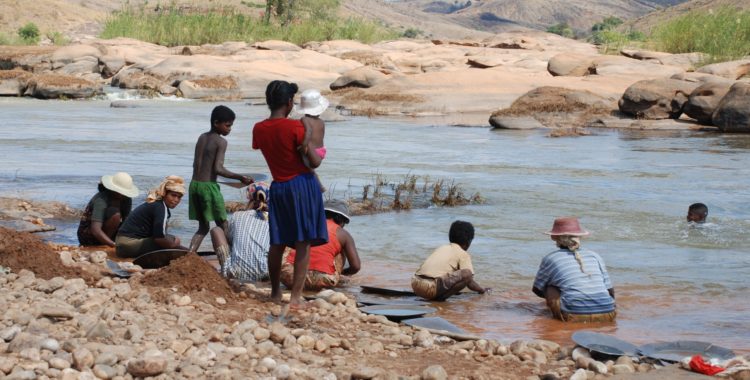Today - the 12th of June – is World Day against Child Labour. While children working in the agricultural sector have been the focus for the past 20 years, children working in mining – which is believed to number 1 million – have received attention only in recent years. It is unclear how many children are working in the mining sector – partly due to the lack of a uniform legal definition of ‘child labour,’ which would allow for comparison among different countries. Another reason why the number of children working in mining is unclear is due to the often informal or illegal nature of artisanal and small-scale mining (ASM), which makes these numbers difficult to track.
Worldwide, it is estimated that there are 40 million people working in ASM across 80 countries, with 150 million people depending on ASM practices, including family members of the ASM miners and the broader ASM community. Artisanal miners are responsible for 20% of the global supply chain of gold and diamonds, 80% of the global sapphire supply chain, 26% of the global tantalum supply chain, and 25% of the global tin production. In many of these countries, more than 70% of ASM operators are informal, and informality can lead to negative environmental and social impacts as well as exclusion of ASM miners, communities, and children from legal protection.
An integrated approach to address child labour
Over the years, Levin Sources have worked with governments in mineral-producing countries to improve resource governance, and we have worked with private companies upstream and downstream to improve due diligence and address child labour risks in mining. While NGOs and media place a lot of emphasis on the role of companies in addressing child labour risks, our work has proven that child labour can only be addressed in a holistic and integrated manner, which goes beyond the specific mineral supply chain and looks at the broader market system. We must emphasise that when initiatives focus on specific commodity supply chains without considering the broader market system, the political environment, and social protection required, then children removed from mining are at risk of migrating to other hazardous forms of employment such as fishing, agriculture, and, in the worst case scenario, sex work.
An integrated approach is crucial for children to be protected, and any approach must consider improving the legal framework, addressing causes of poverty, facilitating access to education, improving transition to employment, providing safety nets to children who are alone and have to work to survive, and creating a diverse range of employment opportunities. An integrated approach will also include addressing issues related to corruption and poor governance of resources that have a detrimental impact on the efficient and effective raise of government revenue, which could be used to deliver public services.
Neither the specific mineral supply chains’ actors alone, nor ministries and leaders that focus on mining alone, can successfully address child labour. Since child labour is not limited to a specific sector and child workers migrate across sectors, this is an issue that requires the collective efforts of various ministries in mineral-producing countries, as well as civil society, communities, international public and private actors, and private local companies.
Any project led by a private actor, whether it be a private company or NGO, in the delivery of what are supposed to be public goods (e.g. schools, roads, clinics) are at risk of long-term sustainability when there is no involvement from the public sector.
The ILO mission
The ILO has worked for many years to address poor working conditions and child labour in the garment, fishing, and agriculture sectors, and its experience in addressing child labour through area-based and holistic approaches, with coordinated interventions of different integrated intervention of different government institutions, social partners, private sector, CSOs and local communities, should be looked at and analysed. Perhaps future interventions in the mineral space should build on what the ILO and its partners have learned in other sectors for the last 20 years.
Levin Sources are currently working on a project for the ILO in order to gather cases of good practice to tackle child labour and poor working conditions in the ASM sector. The final report is expected by the end of July.
References:
- Intergovernmental Forum on Mining, Minerals, Metals and Sustainable Development (IGF). (2017). Global Trends in Artisanal and Small-Scale Mining (ASM): A review of key numbers and issues. Winnipeg: IISD.
- Ending child labour by 2025: A review of policies and programmes International Labour Office (ILO), Geneva, 2017. URL:
- O’Driscoll, D. (2017) Overview of child labour in the artisanal and small-scale mining sector in Asia and Africa.






